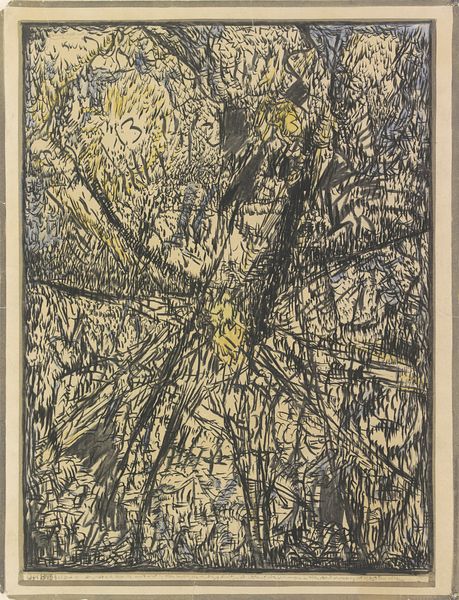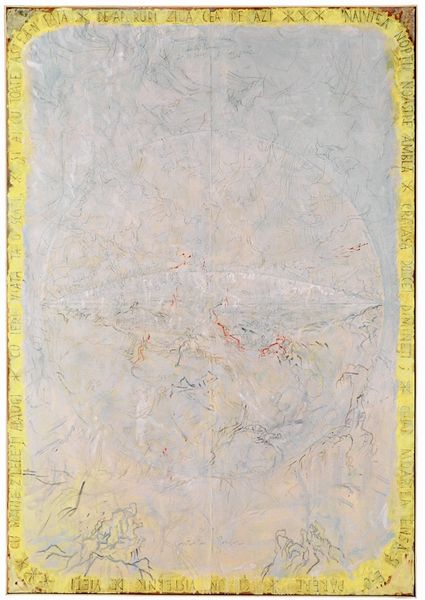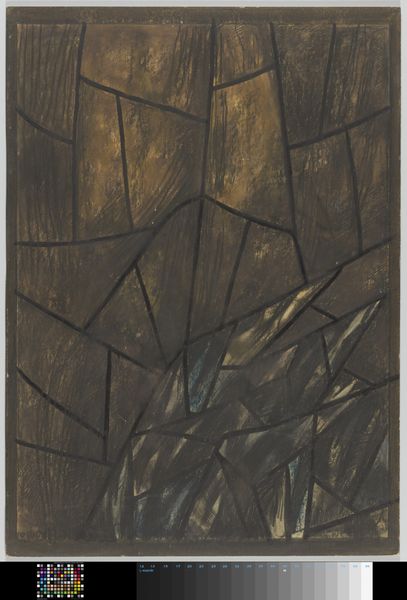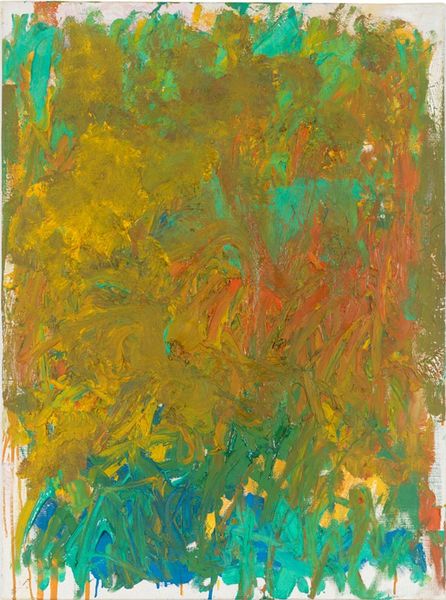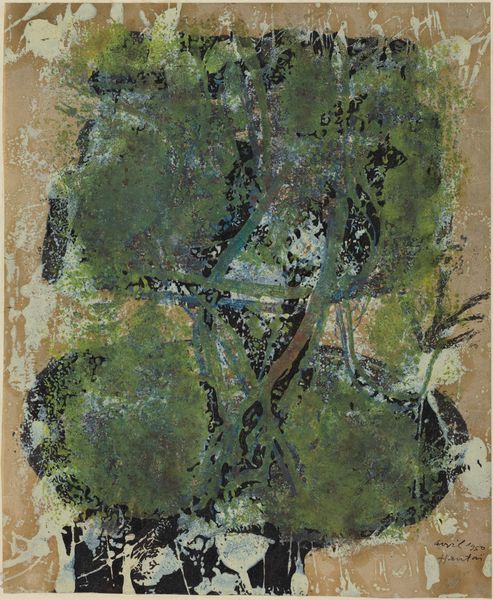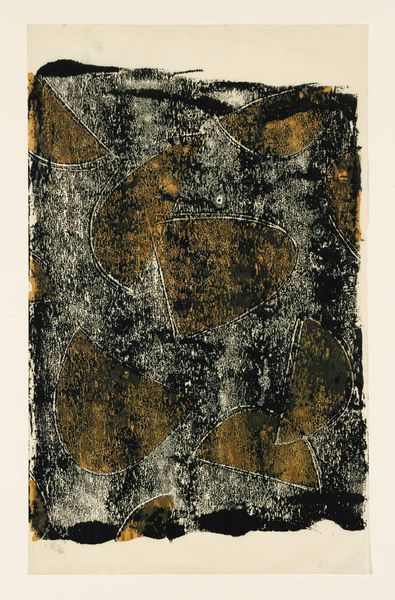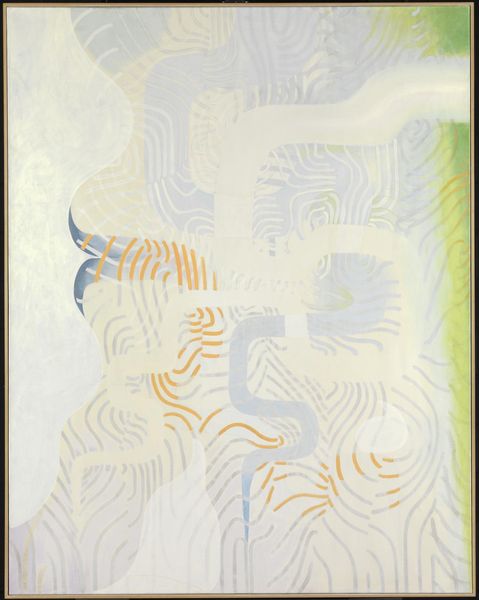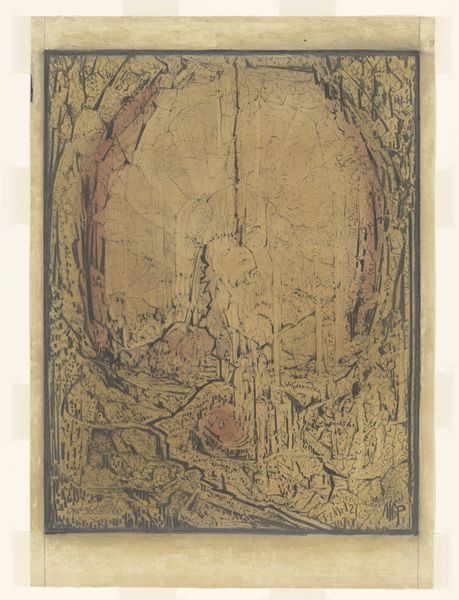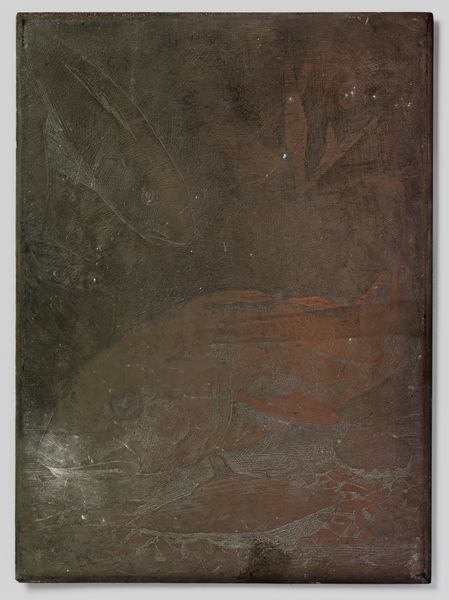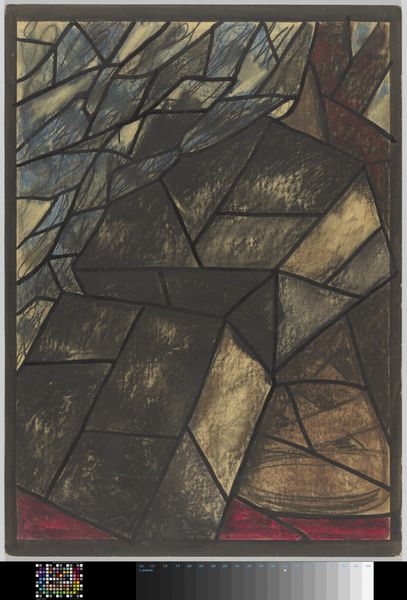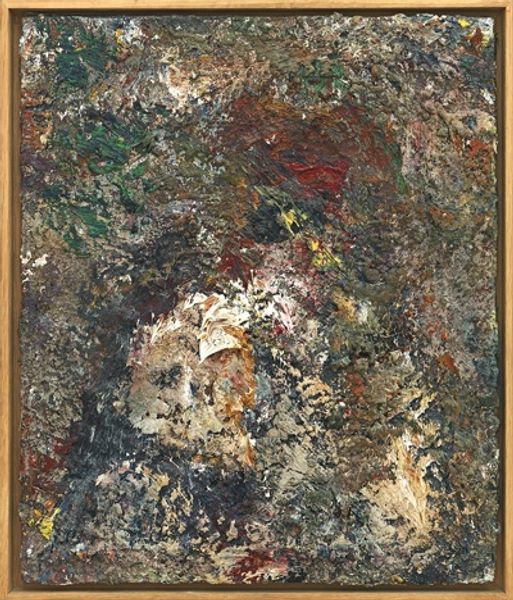
Opus 862, Christus uit den dood herrezen wandelt droevig in den holen van 't bewustzijn 1916 - 1927
0:00
0:00
painting, ink
#
abstract expressionism
#
organic
#
painting
#
ink
#
organic pattern
#
expressionism
#
abstraction
Dimensions: height 700 mm, width 420 mm
Copyright: Rijks Museum: Open Domain
Curator: Oh, this piece! It hums with a kind of frantic energy. It's "Opus 862, Christus uit den dood herrezen wandelt droevig in den holen van 't bewustzijn," or "Opus 862, Christ risen from the dead walks sadly in the hollows of consciousness." Editor: What a mouthful! It feels like peering through a jungle at twilight. That acid yellow glow contrasting with those oppressive greens is really something else. Very disquieting. Curator: Indeed. It's the work of Albert Plasschaert, created over quite a span, between 1916 and 1927. Primarily executed in ink and paint, it epitomizes a raw kind of expressionism. The museum acquired it back in the forties, believe it or not. Editor: The long creation timeframe is interesting, it is possible the artist's idea morphed over time. Expressionism definitely resonates. It feels incredibly personal. A very tormented soul, perhaps wrestling with faith, you get that sense, no? That central figure barely discernible amid a storm of lines... are we even sure it’s Christ? Curator: Well, Plasschaert was, to put it lightly, immersed in the turbulent currents of early 20th-century thought. He would write as an art critic about social realism after the World War I. And yes, that's the entire point. Faith in doubt. Resurection meets depression. Editor: What a strange mix, a kind of radiant darkness. It subverts expectation, presenting something hopeful—the risen Christ—through such a murky, grief-stricken lens. Almost as if salvation is a burden. Or a paradox. The composition looks crowded. Curator: The "organic pattern", so called by modern eyes, has a clear tie with expressionism as a means to challenge the dominant forms and symbols that shape individual experience, in favor of subjectivity. Its like Christ walking on abstract ground, questioning it existence. Editor: I find myself wanting to smooth the colors together, but its attractive qualities reside within that constant visual unease and sense of being claustrophobic! There is not exit in consciousness! The artist's perspective must have been very strong on what they were doing. Curator: I concur. I've seen crowds pause, and stare at it. It certainly gets a response! It forces an encounter with the ineffable. Editor: So it does. Perhaps it speaks best not through doctrine, but the honesty of inner conflict. Curator: Beautifully put! A somber masterpiece, indeed.
Comments
No comments
Be the first to comment and join the conversation on the ultimate creative platform.
